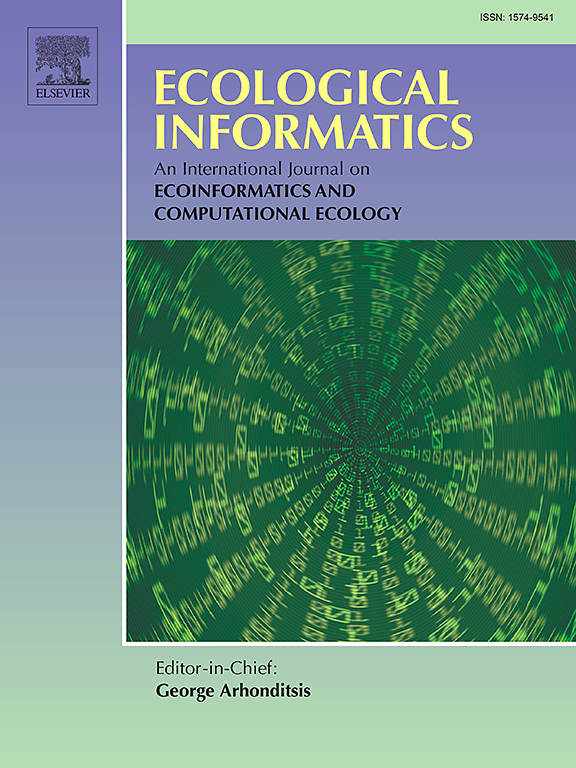Curating protected area-level species lists in an era of diverse and dynamic data sources
IF 5.8
2区 环境科学与生态学
Q1 ECOLOGY
引用次数: 0
Abstract
Dynamic yet accurate species lists for protected areas are essential for conservation and biodiversity research. Even when such lists exist, changing taxonomy, ongoing species migrations and invasions, and new discoveries of historically overlooked species mean static lists can become rapidly outdated. Biodiversity databases such as the Global Biodiversity Information Facility, and citizen science platforms such as iNaturalist, offer rapidly accessible, georeferenced data, but their accuracy is rarely tested. Here we compare species lists generated for two of the world's oldest, more famous protected areas – Yosemite National Park in California, United States and Royal National Park in New South Wales, Australia – using both automated data extraction techniques and extensive manual curation steps. We show that automated list creation without manual curation offers inflated measures of species diversity. Lists generated from herbarium vouchers required more curation than lists generated from iNaturalist, with both incorrect coordinates attached to vouchers and long-outdated names inflating voucher-based species lists. In comparison, iNaturalist data had relatively few errors, in part due to continual curation by a large community, including many botanical experts, and the frequent and automatic implementation of taxonomic updates. As such, iNaturalist will become an increasingly accurate supplementary source for automated biodiversity lists over time, but currently offers poor coverage of graminoid species and introduced species relative to showier, native taxa, and relies on continued expert contributions to identifications. At this point, researchers must manually curate lists extracted from herbarium vouchers or static park lists, and integrate these data with records from iNaturalist, to produce the most robust and taxonomically up-to-date species lists for protected areas.
在多样化和动态数据源的时代,策划保护区级别的物种清单
动态而准确的保护区物种清单对保护和生物多样性研究至关重要。即使存在这样的列表,不断变化的分类,持续的物种迁移和入侵,以及历史上被忽视的物种的新发现意味着静态列表可能会迅速过时。诸如全球生物多样性信息设施这样的生物多样性数据库和诸如iNaturalist这样的公民科学平台提供了可快速获取的地理参考数据,但是它们的准确性很少得到测试。在这里,我们比较了两个世界上最古老、最著名的保护区——美国加利福尼亚州的约塞米蒂国家公园和澳大利亚新南威尔士州的皇家国家公园——生成的物种清单,它们使用了自动数据提取技术和大量的人工管理步骤。我们表明,没有人工管理的自动列表创建提供了夸大的物种多样性措施。从植物标本馆代金券中生成的清单比从iNaturalist上生成的清单需要更多的管理,代金券上的坐标不正确,以及长期过时的名称使基于代金券的物种清单膨胀。相比之下,iNaturalist数据的错误相对较少,部分原因是由包括许多植物学专家在内的大型社区持续管理,以及频繁和自动实施的分类更新。因此,随着时间的推移,iNaturalist将成为自动化生物多样性列表的一个越来越准确的补充来源,但目前提供的禾草类物种和引入物种相对于原生分类群的覆盖率很低,并且依赖于持续的专家贡献来识别。在这一点上,研究人员必须手动整理从植物标本馆凭单或静态公园列表中提取的列表,并将这些数据与iNaturalist的记录相结合,以生成最可靠的、分类学上最新的保护区物种列表。
本文章由计算机程序翻译,如有差异,请以英文原文为准。
求助全文
约1分钟内获得全文
求助全文
来源期刊

Ecological Informatics
环境科学-生态学
CiteScore
8.30
自引率
11.80%
发文量
346
审稿时长
46 days
期刊介绍:
The journal Ecological Informatics is devoted to the publication of high quality, peer-reviewed articles on all aspects of computational ecology, data science and biogeography. The scope of the journal takes into account the data-intensive nature of ecology, the growing capacity of information technology to access, harness and leverage complex data as well as the critical need for informing sustainable management in view of global environmental and climate change.
The nature of the journal is interdisciplinary at the crossover between ecology and informatics. It focuses on novel concepts and techniques for image- and genome-based monitoring and interpretation, sensor- and multimedia-based data acquisition, internet-based data archiving and sharing, data assimilation, modelling and prediction of ecological data.
 求助内容:
求助内容: 应助结果提醒方式:
应助结果提醒方式:


